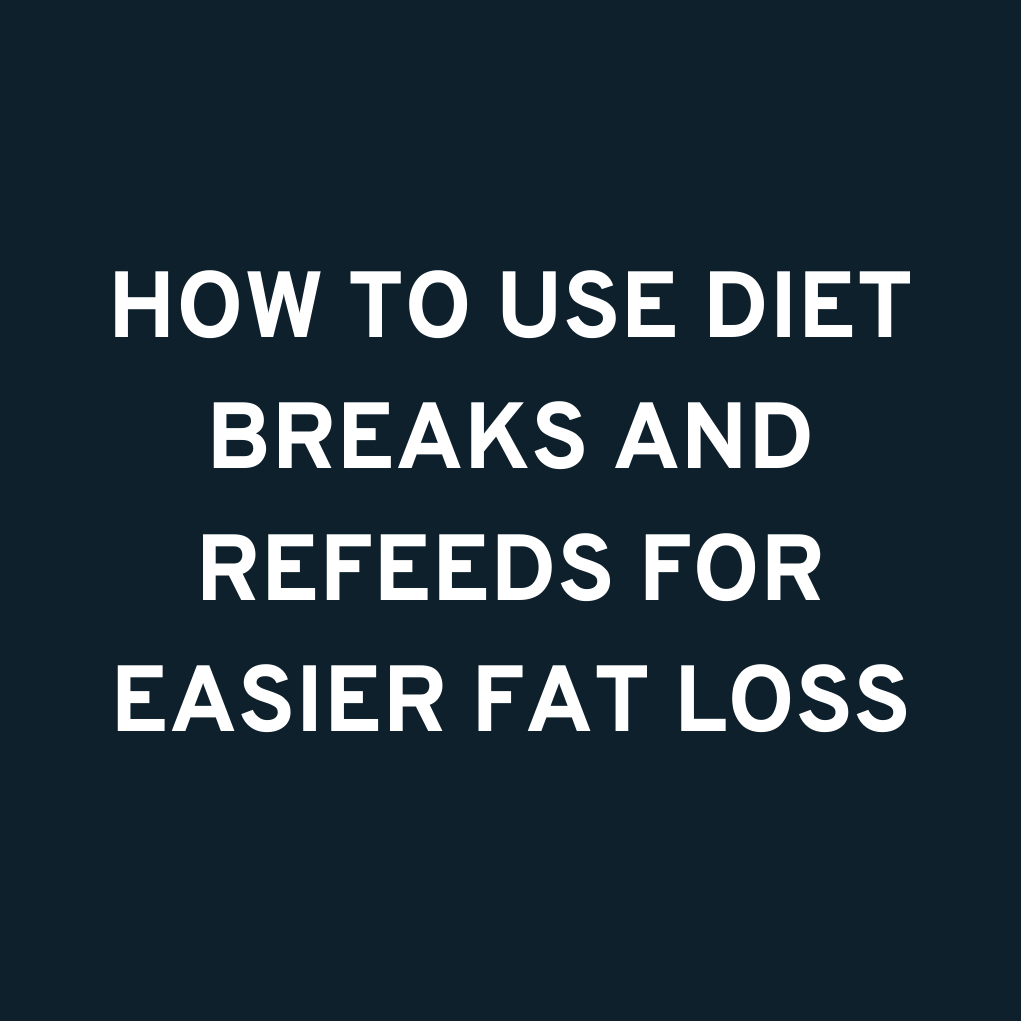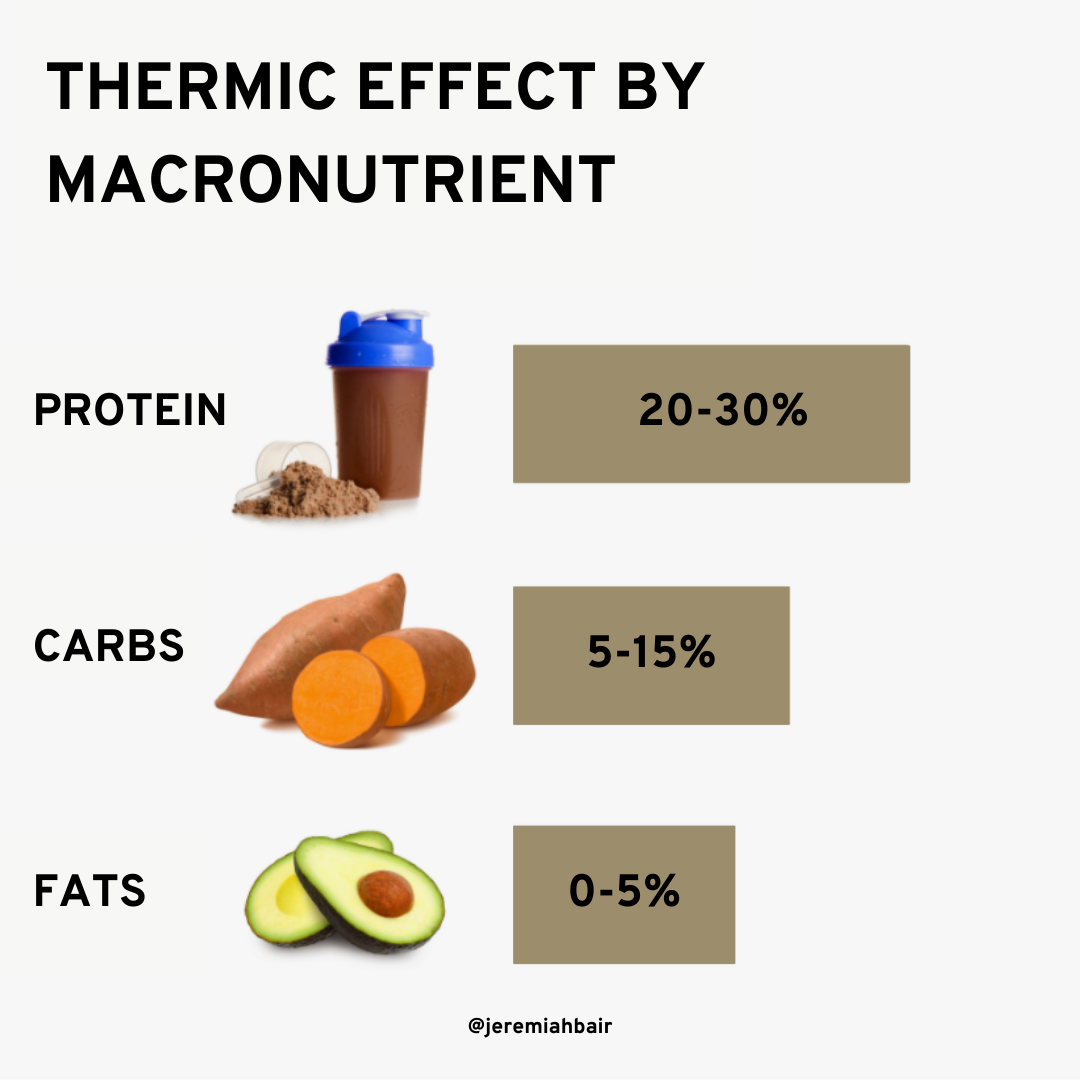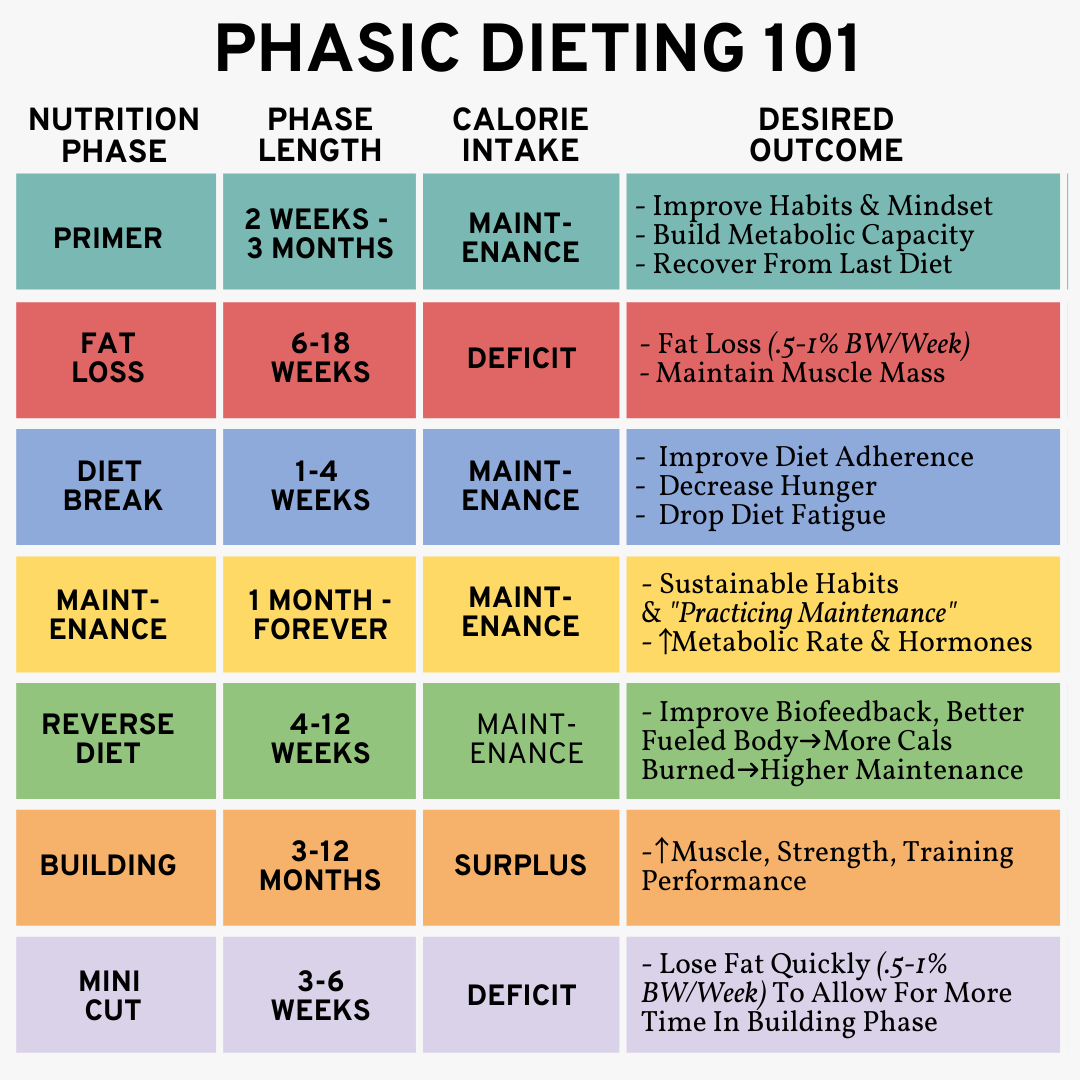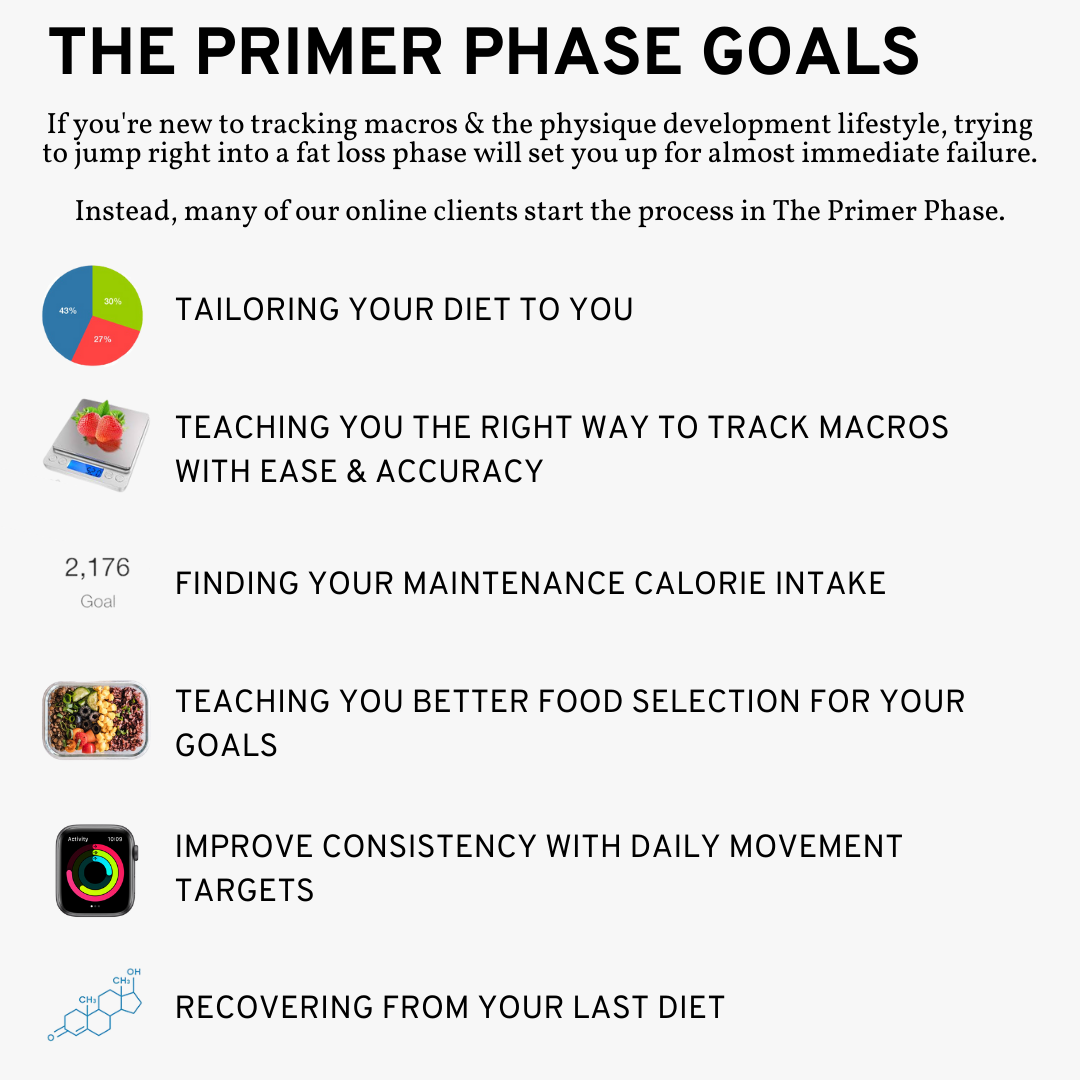For a lot of women, going through a building phase can be a little intimidating.
We are always chasing fat loss and being smaller, but at some point if you want to get a strong/toned looking physique you’ll need to spend some time building so you have the muscle mass to give you the shape you want.
The foundation of making progress when trying to change your physique is having the right nutrition strategy. You might know the basics of "calories in vs. calories out" but it goes a lot deeper than that when you get into more advanced territory with building the most amount of muscle possible.
For the goal of building muscle, you need to have a good grasp of your macronutrient requirements
mac·ro·nu·tri·ent
A type of food (e.g. fat, protein, carbohydrate) required in large amounts in the diet.
In order to set your macros, you need to know the hierarchy of importance with your targets for each goal as they are different for fat loss vs. building.
For fat loss, the hierarchy goes:
- Adherence. This is the foundation because if you are trying to stick to something that doesn’t fit your lifestyle or preferences, it probably won’t be sustainable for long and you’ll either not achieve the results you want, or achieve the fat loss but end up going back to where you started shortly after.
- Total calories. In order to lose fat you must be in a calorie deficit, burning more calories than you’re consuming.
- Protein/macronutrients. These are the proteins, carbs, and fats that make up your calorie allotment. Shifting these around in different proportions can vary the results you get within your fat loss diet.
- Micronutrients. These are the vitamins and minerals that are included in the food you’re eating. These are important indirectly for fat loss, and more and more the longer-term because the healthier you are the better you’ll respond to a fat loss diet and the longer you’ll be able to maintain a healthy and fit physique.
- Meal frequency and timing. This can help out quite a bit with adherence and training performance, but doesn’t directly play a large part in fat loss.
- Supplements. These have almost no effect in fat loss until you get into the illegal stuff. There are some potentially health-promoting effects of some supplements, which as discussed above if you’re healthier you’ll have a better outcome, but any thermogenic or “fat loss boosting” effects are negligible.

The muscle building hierarchy is a bit different:
- Nitrogen balance. To build muscle you have to have a positive nitrogen balance, and nitrogen is found in protein.
- Protein frequency. To build muscle we want to get a spike of amino acids from protein between 3-6 times per day, spaced 4-6 hours apart.
- Macros. The amount of carbs and fats you have play a part in muscle building.
- Carb and fat timing. This is when you eat carbs and fats, and timing around training.
- Food quality. This is how much of your diet is made up of whole, micronutrient-dense foods…and just like with fat loss, this is higher on the hierarchy but as always, a healthier body will respond and recover better, so it’s best to dial this in as well.
- Supplements. These are the least important aspect of building just like with fat loss.

SETTING MACROS TO BUILD MUSCLE
In order to set your macros for muscle building, you will follow a similar order but with more consideration for timing, and almost always skewed more toward carbohydrates. Fat loss is more forgiving on some of the details, as long as you are in a calorie deficit and getting enough protein. Within muscle building, you will need to dial in protein spacing and timing a bit more, and make sure you’re eating enough carbs for energy, glycogen replenishment, and repair. Fats play a supporting role and are set close to the minimum to maintain healthy hormones, organs, and tissues.
The sequence in which you’ll figure out your muscle building macros is:
1a. Calories
1b. Protein
2. Protein spacing and timing
3. Fats
4. Carbs
CALORIES
In order to set your macros for building muscle you have to first find the calorie target you’ll use.
To do that you need to know your maintenance intake. Maintenance intake is a range, and will depend on several factors like:
→ How adaptive is your metabolism?
→ How active are you throughout the day?
→ What is your current size and body composition?
→ What is your dieting history?
To find your maintenance, the two simplest ways of doing that are to:
1. Use an online calculator. This is a very broad rough estimate, and a lot of times will overshoot maintenance if you are someone with low non-exercise activity or if you have dieted a lot in the past, but it is a jumping off point to adjust from.
2. Track for two weeks.
This way is much more individualized to you, but takes two weeks. Basically you track everything you eat and drink for two weeks and find the average intake per day. You would also be tracking your weight during this time. If your average weight is very similar week to week, you are eating within your maintenance range.
Once you’ve found your maintenance intake, you will start out by adding 100-200 calories per day for a week or so at a time, taking average weekly weights.
Your desired rate of gain will work on a scale from 0%-0.5% bodyweight gain per week.
You will be toward the lower end of that range if:
→ You are a newer lifter who isn’t very lean and wants to recomp (lose fat while building muscle)
→ You are wanting to stay very lean and are ok with making the trade-off for less muscle gain
→ You are an experienced lifter who is near genetic potential and taking a very long building phase in order to minimize the cutting time later on
You will be on the higher end of that range if:
→ You are an experienced lifter who wants to gain in a shorter amount of time and you’re ok with more fat gain
→ You are a newer and younger lifter who wants to maximize newbie gains
Let’s use a 150 pound example client who started with a maintenance of 2200. With a couple of increases of 100-200 calories they may end up starting their muscle building phase around 2500 calories.
PROTEIN
In general, protein targets should fall somewhere within 0.8-1.2g/lb of bodyweight. You could theoretically increase the protein target in a building phase because you’ll be getting more trace proteins in things like beans, grains, and other non-optimal protein sources, but you also have the added benefit of plenty of carbs for a protein-sparing effect, so the range tends to still stay around 0.8-1.2 grams per pound.
From there you need to decide on your protein spacing and timing.
Muscle protein synthesis (MPS) is the process of repairing and building your muscle tissue and is triggered by a dose of amino acids in your protein, and notably leucine.
This ties into an important concept called "the muscle full effect".
The muscle full effect is the observation that there is a period of time where amino acids spike MPS fully, then there is a necessary period of time where they fall back to baseline before you can maximally stimulate MPS again with another meal.

Because of this you want to spread your protein intake into enough meals to get that MPS spike several times per day, but not spread your protein into such small meals that they don’t contain enough amino acids/leucine to maximize MPS in each.
Typically, 3-6 meals with 3-4 hours between meals will tick both of those boxes.
Exactly what meal spacing you go with in the 3-6 range depends on your total protein amount per day.
A large man eating 250 grams of protein per day is able to have more meals and still hit the leucine threshold...plus he may need to have more meals in order to feel good eating that amount of protein.
250 grams of protein split between 6 meals (40-45 grams per meal) is a lot easier than eating the same amount in two large meals (125 grams of protein per meal).
On the flip side if you are a smaller female weighing around 110 pounds and you split your protein into 6 meals that only gives you about 18 grams per meal, which isn’t enough to maximally stimulate MPS.
We have found that for most clients with a wide range of protein intakes, between 4-5 meals per day seems to be a sweet spot that works well for protein spacing and lifestyle.
Let’s take our example 150 pound woman eating 150 grams of protein per day. Eating 4 meals per day, she’ll need 35-40 grams of protein per meal.
Another strategy you can use to get every last bit of benefit from your protein intake is to have a slow digesting protein source before bed. THIS study found that having a 40g dose of casein protein immediately before sleeping improved recovery from exercise and stimulated muscle protein synthesis.
In order to take advantage of the spike of amino acids while you sleep, you’d want to have a slow digesting protein. The study participants used casein protein powder supplements, but there are other sources of casein that can work like Greek yogurt and cottage cheese.
CARBS AND FAT
Once your protein is nailed down you can start to figure your carb and fat targets. Fats will generally stay pretty close to the minimum threshold for health in a build phase, which is 0.3-0.4 grams per pound of bodyweight with women staying closer to the top end and men toward the bottom end.
When you’re building muscle you want to have the most amount of carbs available, which is why fats need to stay as low as possible while still maintaining health. Carbs will be fuel for glycolytic training, keep glycogen storage full, aid in staying in an anabolic state because it triggers the release of insulin (more on that HERE), and they are protein sparing.
The 150 pound woman will stay around 50g of fat per day to fall within this .3-0.4 range.
From there, the rest of the non-protein calories will go toward carbohydrates.
150g of protein is 600 calories, and 50g of fat is 450 calories, 1050 calories total.
The calorie total is 2500, so 2500-1050=1450.
1450/4 (calories per gram of carb) gives us 362.5 (rounded to 365) grams of carbs.
So the total macro breakdown per day is:
→ 2500 calories
→ → 150g protein
365 g carbs
→ 50g fats
Once you have your carb targets and your total breakdown for the day you can adjust your macro timing to fit your training.
Your protein targets will stay pretty consistent over the course of the day (i.e. if you know you want to eat 5 meals per day you can just divide your total grams of protein by 5 and try to stick pretty closely to that to take advantage of spiking MPS and the muscle full effect mentioned above).
But with carbs and fats, there is a big advantage to specific timing.
We like to see about ⅔ of the day’s carbs split between pre and post workout meals in order to fuel training and recovery. These should be fairly easily and quickly digested carbohydrates.
Fats take longer to digest, so those are better saved for meals not eaten immediately pre or post workout. (There’s a full breakdown and explanation of what to eat around training, and why HERE.)
FOOD SELECTION
The foundation of choosing meals remains the same in all phases.
They should be:
- Fit to your targets
- Enjoyable
- Repeatable
But a meal that is enjoyable (meaning it makes you feel good, digests well, and tastes good enough) on building macros is different from a meal that is enjoyable on fat loss macros.
If you’ve been in a dieting mindset for a long time you’re probably used to looking for high volume, low calorie foods.
That’s great for cutting, but if you try to fill out all of your carbs with vegetables and fruit you’re going to be bloated and feel like you’re gaining much more fat than you want. More importantly you may impair the digestion and assimilation of the nutrients you’re eating if your fiber intake gets out of hand.
This is a great place to add in easily digested carbs. Some carbs that digest very well for most people are:
→ Rice and all rice products like puffed rice, rice cakes, and cream of rice
→ Cereal
→ Potatoes
→ Spotted bananas
→ Bread
This is also the time to add in more calorie dense foods you may not normally eat.
Of course it’s easy to get carried away with this and you still want most of your food to be whole, natural, unprocessed foods, because they will provide micronutrients and promote overall health.
But once you include a certain amount of those foods you don’t get extra credit for more. In most cases if you get over a certain % of RDA of a particular vitamin, you don’t get extra-healthy, it just passes through urine.
Once you have a few servings of a variety of fruits and vegetables included in your day it’s fine to include whatever easily digested more-palatable foods you prefer.
And that's exactly how you can figure out the right macro breakdown for building your physique.
Taking all of these factors into consideration and nailing them consistently will take your building phases and your physique to the next level.
If you're ready to achieve your full physique potential, with expert guidance through these phases of nutrition and training, click here to apply to work 1-1 with our team.

WRITTEN FOR YOU BY ANDREA RODGERS
Andrea Rogers is a certified nutrition coach, personal trainer, and coach for BairFit. Follow her on Instagram for more helpful training & nutrition content.
































































